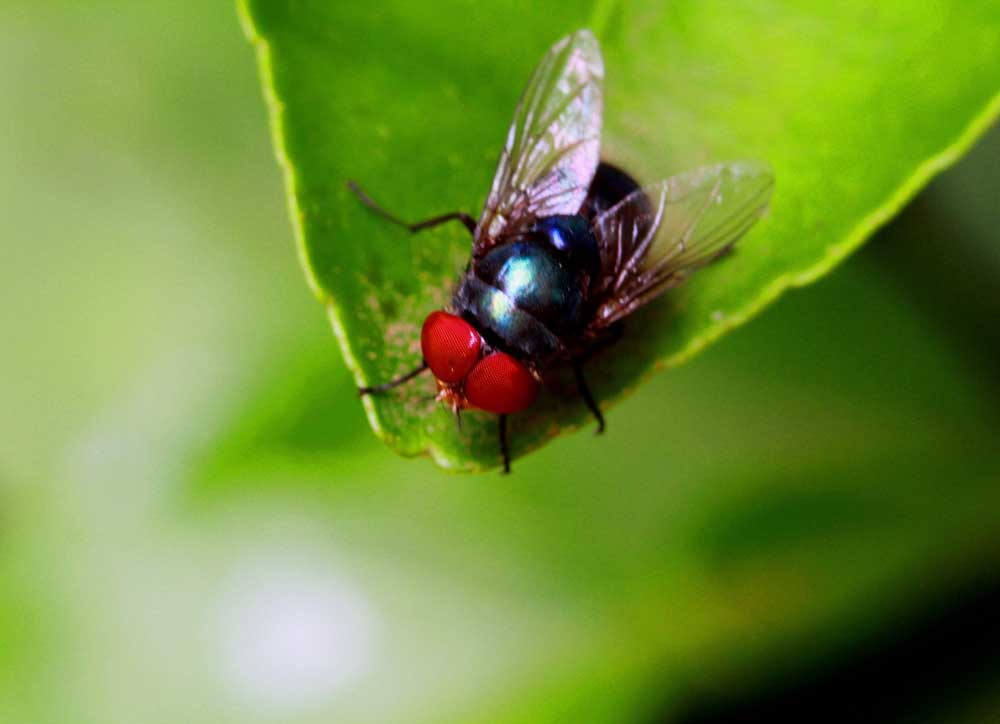Gardening corner: Shoo fly! Well, perhaps it’s best they do what they do
Published 4:00 am Sunday, October 15, 2023

- Some flies can be beneficial to your garden.
It’s not often an adult son (50ish) has the opportunity to criticize the reading choices of his mother (me). The material was visible at the favored reading spot. His reaction bordered on being horrified along with the comment that he never thought those articles would be on my reading list.
Why?, you ask. The articles were “Appreciating Flies” and “Celebrating Ants.” Both articles have appeared in The American Gardener, a publication of the American Horticulture Society.
My rational for delving into those subjects is how can we convince our friends and neighbors to discontinue using so many chemical sprays. How, where and when did we develop the ideology that all aspects of our life including our gardens had to be perfect?
Dragonflies, damselflies, butterflies and mayflies may have “fly” in their names are not flies. True flies are in the order of Diptera (meaning two-wing). Most insects have two pairs of functional flight wings, true flies have only one. A second pair of modifies hindwings called halteres act as a mini gyroscope and helps flies with aerial acrobatics. Horseflies and mosquitoes (yes, they are considered flies) have piercing and sucking mouth parts. Many flies have lapping and sucking mouth parts.
Circle of life
Blow flies are often called filth flies due to their food preferences which includes dead and decaying organic matter and dog waste. Blow flies play an important role in decomposition which is important in the carbon cycle. The flies lay eggs in animal carcasses which then hatch into larvae (called maggots) that feed on the carcasses before pupating and completing their life cycle. The process helps recycle nutrients back into the environment. Blow flies also pollinate flowers as they forage for nectar.
Tachinid flies are parasitoids and attack the larvae of many pests including cabbage worms, corn ear worms, Japanese beetles, potato beetles, cucumber beetles are just a few on their list. The flies lay eggs on a host insect or a leaf which is then consumed by the host. When the eggs hatch, larvae burrow into the host and begin feeding. The host meets a gruesome end but most important is that the flies provide a pest control for gardens and agricultural crops.
Granted, we can be impatient with what we consider to be a pest but as with many other issues in our life, we need to become more tolerant. According to author Danae Wolfe, globally there are nearly 125,000 species of flies. Surely we can find more natural control measures to use in our gardens; they just may take a little longer than the quick spray from a container.
Ants help till the ground
I have never considered ants to be a beneficial insect. Author Danae Wolfe changed my mind. Ants are in the order of Hymenoptera along with bees and wasps. Underground tunnels create channels in the soil, improving aeration and water penetration. Ants also collect and consume dead insects, fallen fruits, effectively recycling nutrients back into the soil. Some species prey on insect larvae, aphids, caterpillars and other small insects all of which helps to keep the ecosystem in balance.
Carpenter ants are large ants known for nesting in decaying wood. They certainly can cause frustration when found indoors doing damage, but they do play an important role in decomposition, particularly in forest ecosystems where they aid in nutrient recycling.
Fire ants are small reddish-brown ants. You certainly know when you have been stung by one. Fire ants use their mandibles to grasp prey, then sting them from their abdomen. They are important predators of termites, ticks and boll weevils.
Odorous house ants are tiny brown ants known as sugar ants, are a common household pest. They forage for honeydew produced by aphids and other sugary foods including floral nectar. Considered a nuisance indoors, they help with soil aeration and nutrient recycling in the garden.
Immigrant pavement ants are one of the most common ants, introduced from Europe in the early 19th century. The ants thrive in human-modified environments. Sometimes considered invasive they do help to aerate soil, disperse seeds, and recycle nutrients and serve as an important predator in crop fields.
Worldwide, there are over 15,000 known species and subspecies of ants. They live in highly structured colonies, where each member has a specific role to play, using pheromones to coordinate their activities and job duties. If control is needed, using diatomaceous earth might help.
The earth creates natural barriers around your garden or home. The earth is a natural product composed of fossilized remains of algae. It works by dehydrating and killing insects and other arthropods that come into contact with the fine powdery material which has razor sharp edges that damages their exoskeletons.
Be sure to wear a mask to avoid inhaling particles. Diatomaceous earth can be found at garden centers.








